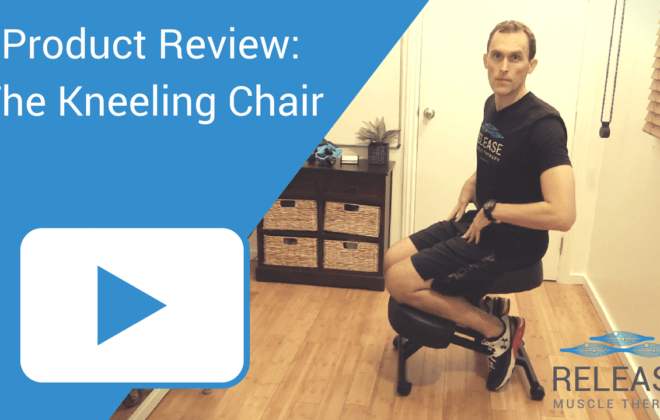Can Lifting Weights Give You Relief From Pain?
 There are few things in the health field as versatile as exercise. It is commonly recommended and sometimes prescribed a s part of the therapy for various health conditions.
There are few things in the health field as versatile as exercise. It is commonly recommended and sometimes prescribed a s part of the therapy for various health conditions.
Even though we assume this type of recommendation for people with excess weight and even cardiovascular issues, it is also very helpful for people that suffer from chronic pain.
First, before diving into this topic, we need to separate exercise into two main types: aerobic and anaerobic. Aerobic exercise is also known as cardiovascular (cardio), and anaerobic exercise is known as resistance training, weight training, or strength training.
Below, we'll evaluate what the research shows when it comes to the effective use of anaerobic training to relieve chronic pain.
Do pain symptoms improve with resistance training?
While many studies show that resistance training improves pain symptoms, other show it might not be all that useful. This can definitely seem confusing, but this discrepancy can exist for a few potential reasons, including the type of pain that is being experienced, and of course the WAY the training is being performed.
If you have a properly designed program and you're doing everything correctly, you'll likely to get improvement from some types of chronic pain (1).
A recent review and meta-analysis of resistance training and chronic lower back pain show that aerobic exercise and resistance training were both associated with a significant reduction in pain intensity. However, resistance exercise displayed an added benefit to the psychological well-being of the individual, which is essential to modulate the perception of pain. (2).
It's also interesting to note that there are many variants of resistance training, and each of them has proven to reduce pain in a different way. For instance, we can divide resistance training into static and dynamic muscle contractions.
Static muscle contraction, which includes isometric exercise (muscle contraction with no movement), is associated with a moderate-to-large modulation of pain, and certain studies have found that maintaining contraction at a low weight for a longer time recruits and exhausts more muscle fibers, leading to a more significant exercise-induced-hypoalgesia.
On the other hand, dynamic resistance, which is performed essentially by shortening and lengthening the muscles, has been found to have similar effects, but usually in the short-term (3).
When and how is strength training appropriate for chronic pain?
Resistance training can be utilized for various types of chronic pain, including fibromyalgia, which is known to be a fairly challenging condition.
Fibromyalgia is a pain condition that is highly variable between people that have it, and it's associated ultimately with a dysfunction of the nervous system and increased susceptibility to pain experience.
Most of the information out there shows that controlling pain in fibromyalgia is an extremely challenging venture. Even so, "old-school" resistance training is still an effective way to reduce the sensation of pain and tenderness, and maintain or increase muscle strength in these individuals.
According to a Cochrane review, aerobic exercise is superior to moderate intensity resistance training in some cases, so it appears to be a good idea to combine them to some degree (4).
One of the more common applications of resistance training in chronic pain is associated with things like repetitive strain injuries. For example, a randomized control trial focused on strength training to treat working populations that had repetitive strain injuries, some of which had a work disability.
They underwent 10 weeks of strength training against the usual ergonomic care that is recommended to address this kind of pain. Strength training showed significant improvements in hand/wrist pain and reduced time to fatigue by an impressive 97% (5).
Achieving these improvements in chronic pain with resistance exercise is not so difficult. All we need is to choose key exercises per muscle group, include one or two sets for each exercise, choose the appropriate weight to perform a correct technique without a problem, and resting between sets a few minutes.
Each repetition should be performed at medium-speed, and doing this twice every week for each muscle group is usually enough for good results. This is in accordance with the current recommendations of physical activity for health by the World Health Organization, which includes 150 minutes of moderate physical activity (aerobic exercise) a week combined with muscle-strengthening activities 2 days a week or more (6).
Common obstacles and risks of resistance training
Generally in order to be effective, resistance training needs to be done 2-3 times per week. This sounds easy, but there are some obstacles to be aware of.
- You may not feel immediate improvements: Even though there's a connection between resistance training and pain sensitivity, it does not produce rapid shifts in pain perception like modalities such as massage or relaxation training. Real improvements in this area take time, as much as 12 weeks to see the true benefits.
- It's about changing your mindset and lifestyle: Resistance training will require time commitment and persistence. If you're not committed or lack the ability to stick to it, you aren't likely to get the outcome you are seeking.
Resistance training may not be the thing that everyone needs for their type of chronic pain, or it may not fit into their needs at a particular time.
Here are a few more things to be aware of:
- Strength-training injuries: Hitting the weights without any professional help, and no mastery of exercise technique may not only reduce the benefits, but also get you injured. Getting injured in the process of trying to relieve pain is a common issue, and this is why you should seek help from a professional!
- Imprecise exercise protocols for the type of pain: Certain types of chronic pain won't respond well to aggressive resistance training. Some, like fibromyalgia, need to be very closely monitored because the training program may constantly need to be adjusted based on how the person is feeling. Frozen shoulder is another issue that may not respond well to strength training at all, and in fact may make it much worse.
Summary
Resistance training (anaerobic exercise) certainly has its place in the therapeutic regime of the chronic pain sufferer and has been shown to be highly effective, but it must be applied to the right kind of pain issue, in the right way, and progressed over time as the person adapts to the program.
Tags In
Sam Visnic
Related Posts
Most Popular Posts
Categories
- Deep Gluteal Pain Syndrome (8)
- Deltoids (2)
- Foam Rolling (2)
- Glutes (9)
- Hamstrings (5)
- Hypnosis for Pain (3)
- Lats (2)
- Levator Scapulae (4)
- Lifestyle (8)
- Massage Therapy (39)
- Mobility (21)
- Movement and Exercise (19)
- Muscles (22)
- Nutrition (2)
- Obliques (1)
- Pain (25)
- Pectorals (3)
- Piriformis (3)
- Plantar Fasciitis (11)
- Psoas (11)
- Quadratus Lumborum (3)
- Quadriceps (2)
- Rhomboids (3)
- Sciatica (1)
- Serratus Anterior (1)
- SI Joint (14)
- Sternocleidomastoid (1)
- Stretching (18)
- Subscapularis (1)
- TMJ (2)
- Trapezius (1)
- Uncategorized (12)









